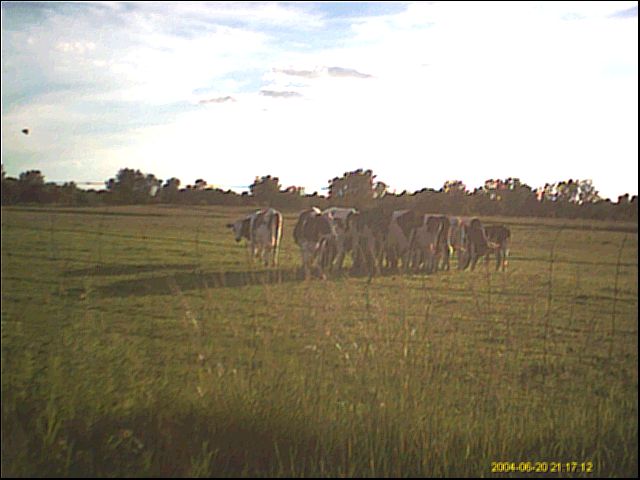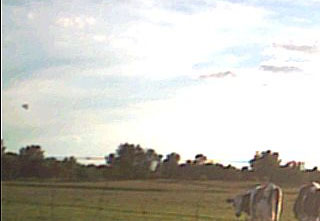Rense.com
When A UFO 'Wedge' Is A Moth
Making Clear Determinations About UFOs In Photos
Rense.com
6-24-4
|

| Quite often the blur factor of both distant-large and close-small objects can be similar, fooling the eye. The first thing to note in this photo is the extreme amount of light from the right as the sun rises. This light is so bright and pervasive that it even diminshes the dark patches on the cows. Using a Photoshop tool that gives percentages of color as well as black intensity, we can take samples from various places in the image and see that the "wedge" object maintains the black intensity level (K) of foreground material, which would not happen if it were a distant-large object in the sky. In the sampling below, the edge object is turning up actually darker than the spots on the cows as well as the foreground shadows they produce, which tells us the wedge is also something close to the camera. |

| In fact, it would be considerably "hazed" showing a normal, volumetric light cast for the sky. Below is how it might look if it were really a distant-large object, rather than a small moth or butterfly closer to the camera (probably about parallel with the fence in the foreground). |

Disclaimer
MainPage
http://www.rense.com
This Site Served by TheHostPros